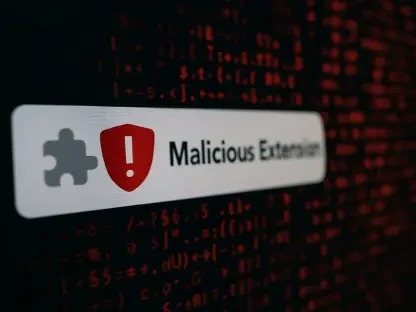The rapidly evolving landscape of low-code/no-code (LCNC) development and robotic process automation (RPA) has revolutionized how organizations approach software creation, enabling faster development cycles and increased efficiency. However, these advancements have also introduced new cybersecurity risks that need to be addressed. To manage these risks effectively, many organizations are turning to Continuous Threat Exposure Management (CTEM), a framework that provides a continuous assessment and action loop for identifying and mitigating threats. This article explores the CTEM framework’s application to LCNC platforms, offering step-by-step guidance for enhancing security.
Defining Scope
One of the initial steps in enhancing LCNC security through CTEM is defining the scope of assets that require management. This involves assessing which LCNC and RPA assets are most critical to the organization and should be brought under the purview of the CTEM framework. The scoping process should include selecting groups of users, connections, connectors, apps, flows, and automations. These assets should be categorized based on business context, business unit, platform environment, or geographic location to ensure comprehensive coverage.
Selecting the appropriate assets for CTEM is crucial as it lays the foundation for all subsequent steps. During this phase, organizations should also identify the various stakeholders, including business users and IT teams, who will participate in the CTEM process. By focusing on assets with the highest business impact, organizations can prioritize their security efforts and allocate resources more effectively. Moreover, a well-defined scope helps in establishing clear objectives and metrics for success, ensuring that the CTEM initiative aligns with broader organizational goals.
Identification
Once the scope is defined, the next step is to identify and catalog all visible and hidden assets, vulnerabilities, and misconfigurations within the LCNC and RPA environments. This involves maintaining an up-to-date inventory of all assets associated with these platforms. Continuous scanning for threats, risks, or any security issues is essential, and engaging stakeholders with detailed information supports the subsequent stages of threat management.
The discovery phase aims to create a comprehensive map of all LCNC activities, making it easier to identify potential security gaps. Organizations should employ advanced monitoring tools that can detect and report vulnerabilities in real-time. These tools should be capable of parsing through extensive datasets to identify hidden assets that might otherwise go unnoticed. By building a robust asset inventory, organizations can improve their visibility into the LCNC environment, which is crucial for effective threat management.
Ranking
The third stage involves ranking or prioritizing the identified security exposures based on urgency, severity, and available controls. Traditional risk-based scores, such as the Common Vulnerability Scoring System (CVSS), can serve as a starting point. However, it is essential to combine these scores with platform-specific and organization-specific inputs to provide a more accurate assessment of risk. Factors such as accessibility, whether apps are enabled or disabled, and the deployment environment (production vs. development) should also be considered.
Prioritization is crucial in the LCNC context due to the large scale of threats and issues detected, coupled with the relatively limited security expertise of many app creators. By focusing on high-priority risks, organizations can allocate resources more efficiently and ensure that the most critical vulnerabilities are addressed first. This targeted approach not only enhances the overall security posture but also fosters a culture of proactive risk management.
Verification
Verification is the next critical step and aims to achieve three main objectives: confirming whether attackers can exploit known vulnerabilities, assessing the worst-case impact if defenses fail, and ensuring processes are in place to respond to any security issues. This stage involves tailored validation techniques suited to the unique attributes of LCNC applications, such as their visual development interfaces, rapid deployment cycles, and reliance on pre-built components.
Traditional application security practices, such as penetration testing, red team exercises, and simulations, are still relevant but need to be adapted for the LCNC environment. These validation efforts should take into account the specific characteristics of LCNC platforms, ensuring that security measures are robust and effective. By thoroughly verifying all identified vulnerabilities, organizations can significantly reduce the risk of exploitation and enhance their overall security posture.
Activation
The final stage of the CTEM process involves mobilizing resources to address identified security issues. This requires active involvement from business users and citizen developers, as security teams alone may not be familiar with the various LCNC platforms and their specific permission models. Mobilization can be both manual and automated, but it must provide clear context, including threat explanations and remediation steps.
Communication and collaboration are key in this phase. Security teams should work closely with business units to ensure that everyone understands their roles and responsibilities in the remediation process. Automated tools can also play a significant role by providing real-time alerts and facilitating rapid response. By fostering a collaborative environment and leveraging technology, organizations can effectively mobilize their defenses against potential threats.
Best Practices for Integrating LCNC Security with CTEM
The fast-evolving landscape of low-code/no-code (LCNC) development and robotic process automation (RPA) has transformed how companies develop software, leading to quicker development cycles and greater efficiency. Despite these advantages, the rise of LCNC and RPA has also introduced fresh cybersecurity risks that require immediate attention. To effectively manage these emerging threats, many organizations are adopting Continuous Threat Exposure Management (CTEM). This framework offers an ongoing assessment and action loop that identifies and mitigates various cybersecurity threats continuously.
Applying CTEM to LCNC platforms is becoming increasingly critical as these platforms’ popularity grows. By integrating CTEM, organizations can regularly monitor vulnerabilities in their LCNC ecosystems and respond to potential security issues proactively. This approach not only strengthens the security posture but also ensures that the rapid development benefits of LCNC are not compromised by security concerns. This article delves into how the CTEM framework can specifically enhance security measures for LCNC platforms, providing detailed, step-by-step guidance on implementation.








